

Damion Smy
Nissan Juke EV will use Leaf platform, due in 2026 - report
11 Hours Ago
PHEV hot hatches aren't really a thing in Australia, and the two sole options right now are being compared here – Leon or 308? Let's find out.

Marketplace Editor
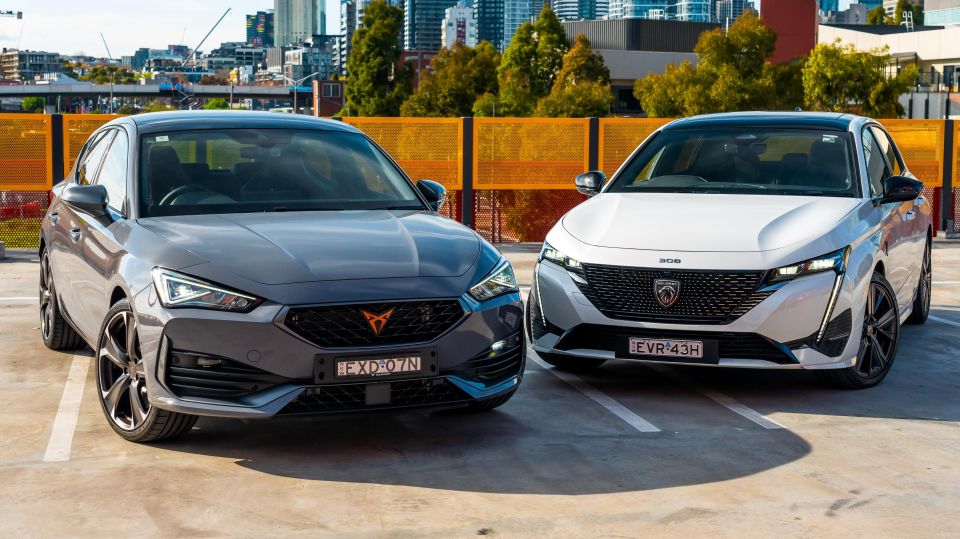

Marketplace Editor
Electric vehicles (EVs) and hybrids are really the ‘it girls’ right now, with plug-in hybrids (PHEVs) always playing third fiddle.
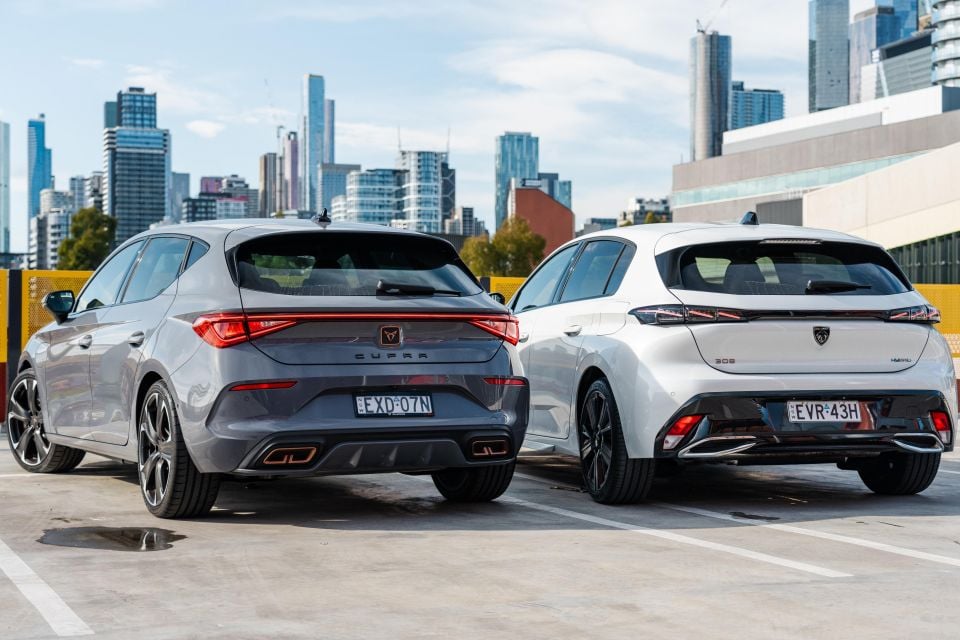
But the technology has been around for a while and is as prevalent as ever, particularly among European marques given they perform favourably in official fuel tests and are incentivised in their home regions.
They are generally more performance-focused options than conventional hybrid offerings, and the use of combustion engines offers more conventional characteristics than electric alternatives when you want to have some fun.
Here we have two plug-in hybrid small hatchbacks promising a balance of dynamism and luxury for $60,000-$70,000, hoping to lure buyers who may don’t quite want to make the leap to electric power.
Both are fresh to our market. The Cupra Leon VZe has been in Australia for just over a year now, and is basically the closest thing you can get to the Volkswagen Golf GTE right now given they share chassis and drivetrains.
Cupra is one of few brands in Australia reporting solid uptake of its plug-in hybrid models, with around 10 per cent of first 3000 orders split across the Leon and Formentor VZe e-Hybrid models.
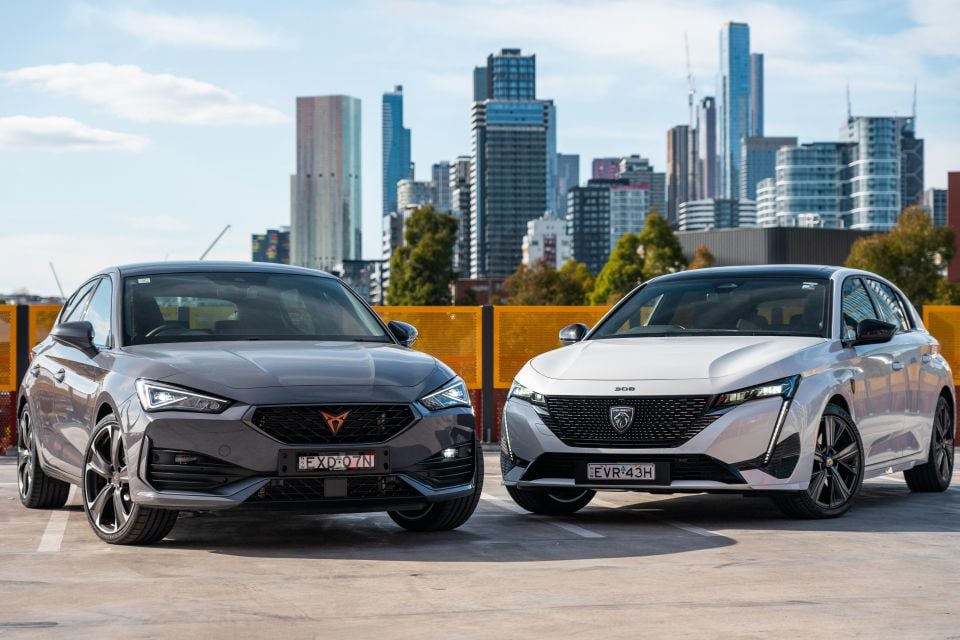
Meanwhile the Peugeot 308 GT Sport Plug-in Hybrid is the most powerful version of the French brand’s popular (at least overseas) small hatch staple.
Where its Spanish rival focuses on dynamism and spirited performance to rival something like a Golf GTI, the Peugeot is more measured in its approach to performance, balanced with a luxurious cabin that could rival a Mercedes-Benz A-Class.
Two very different takes on a similar formula, both of which are small players in what is still Australia’s biggest passenger vehicle segment.
The Cupra Leon VZe is the more affordable of our two competitors, priced from $61,690 before on-road costs for MY24. It’s up $1700 on MY23 pricing, though picks up standard DAB+ radio and a new available option package.
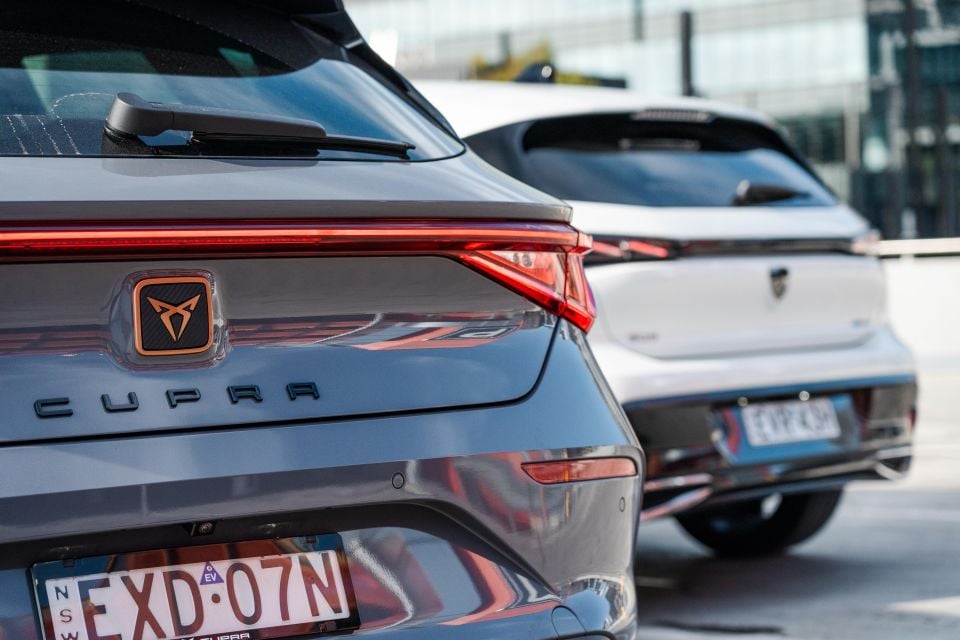
Worth noting is Cupra Australia has aligned pricing of the VZe with the 221kW VZx petrol halo, though drive-away pricing for the plug-in hybrid depends on the state or territory you live in – unlike the petrol-powered Leon range.
Our MY23 test car was fitted with the $2050 Leather Package, which for MY24 becomes the $2550 Leather and Sound Package and brings – you guessed it – full leather upholstery with powered front seat adjustment, heated front seats, and a nine-speaker Beats premium audio system. A panoramic sunroof costs $1850, while our test vehicle’s Graphene Grey premium paint adds $490.
However – fully optioning the Cupra, which is required to match the specification of its French rival, brings the asking price to $66,090 before on-roads, which actually makes it the dearer option here without premium paint.
Meanwhile the Peugeot 308 GT Sport Hatch Plug-in Hybrid is priced from $64,990 before on-road costs, giving the Cupra a $3300 head start. Unlike the Cupra, however, there are no options other than premium paint.
Our test car’s Pearl White is an expensive $1050 extra, bringing the as-tested sticker to $66,040 plus on-roads, making this quite an even match up.
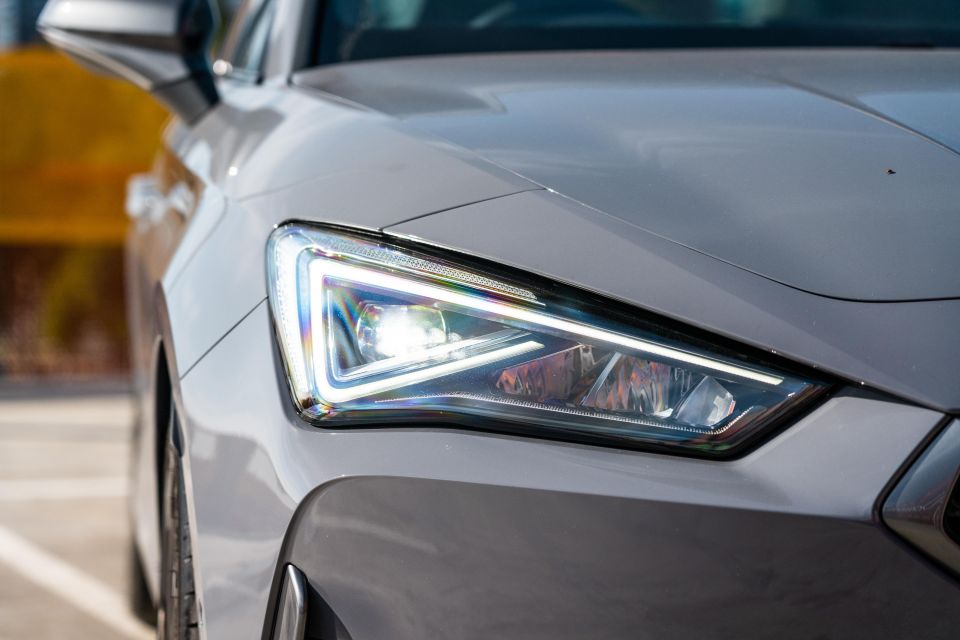
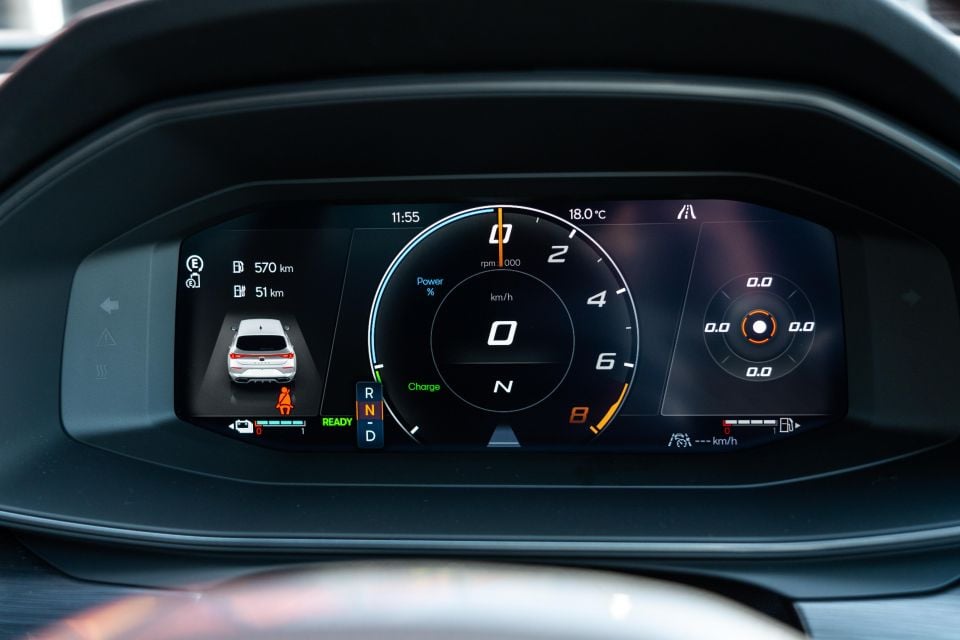
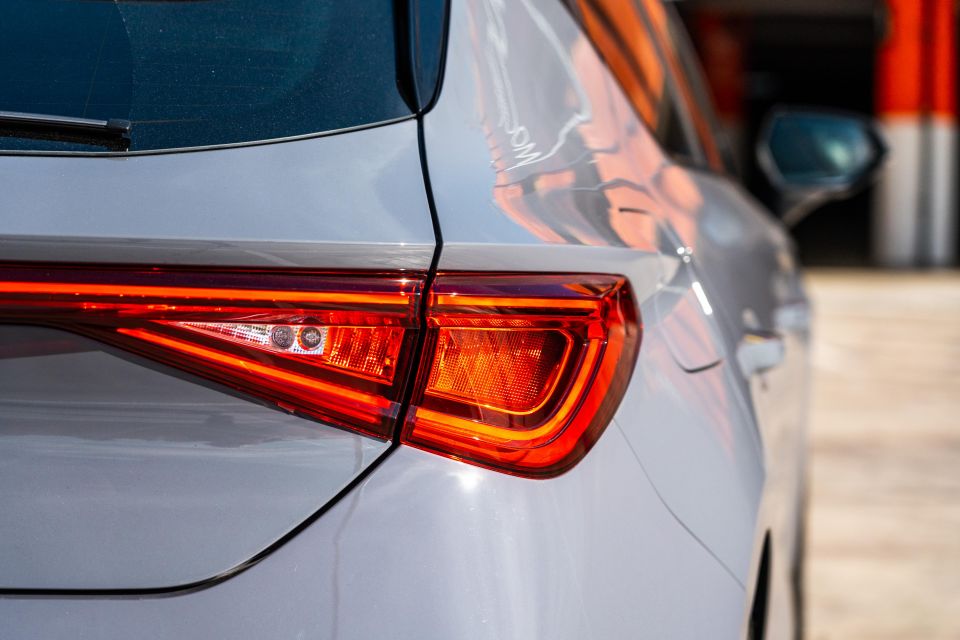
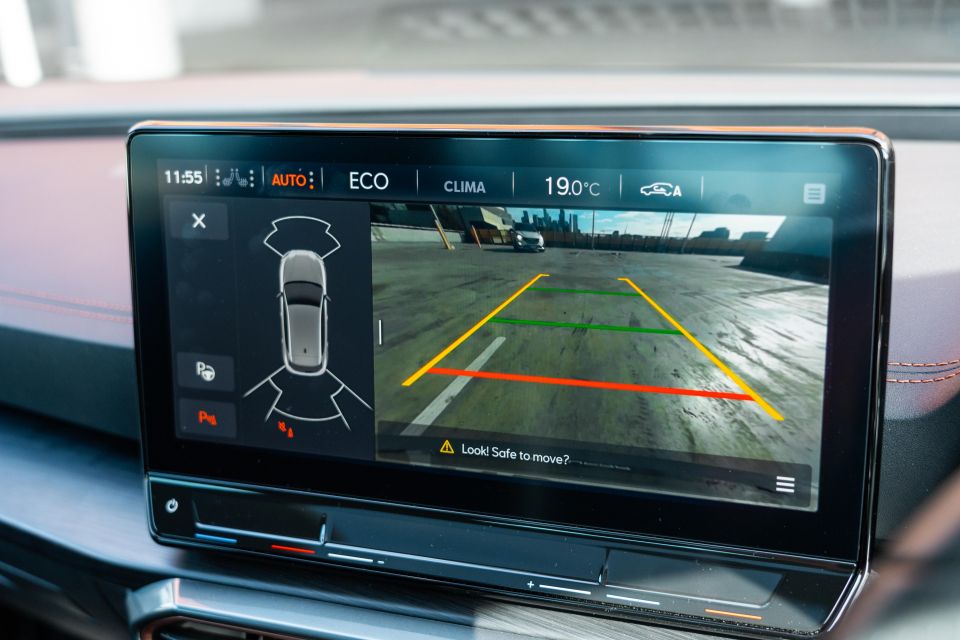
Cupra Leon VZe highlights:
Options:
Leather and Sound Package: $2550 (V, VZ, VZe)
Electric sunroof: $1850 Premium metallic paint: $490
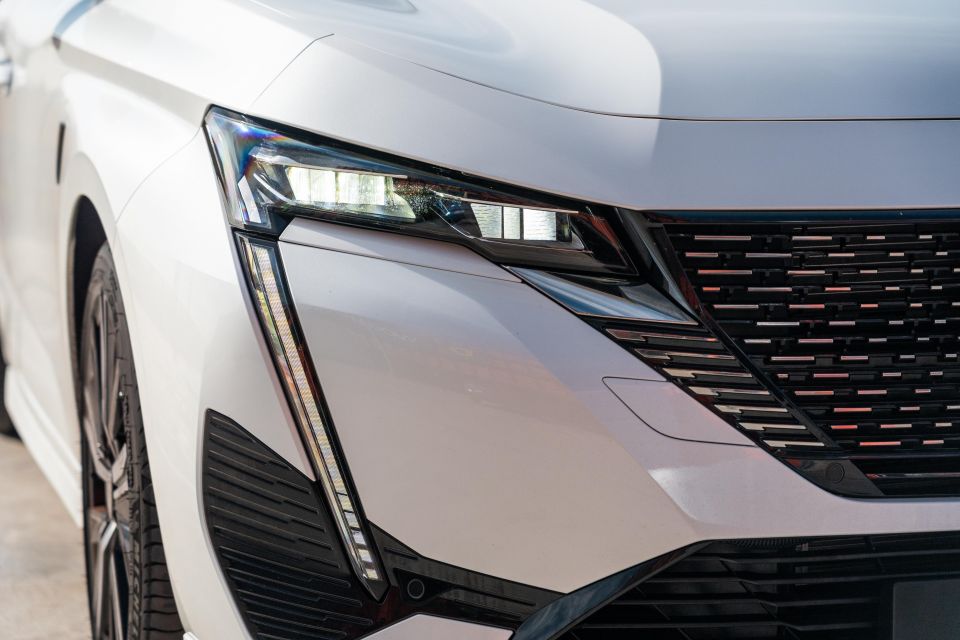
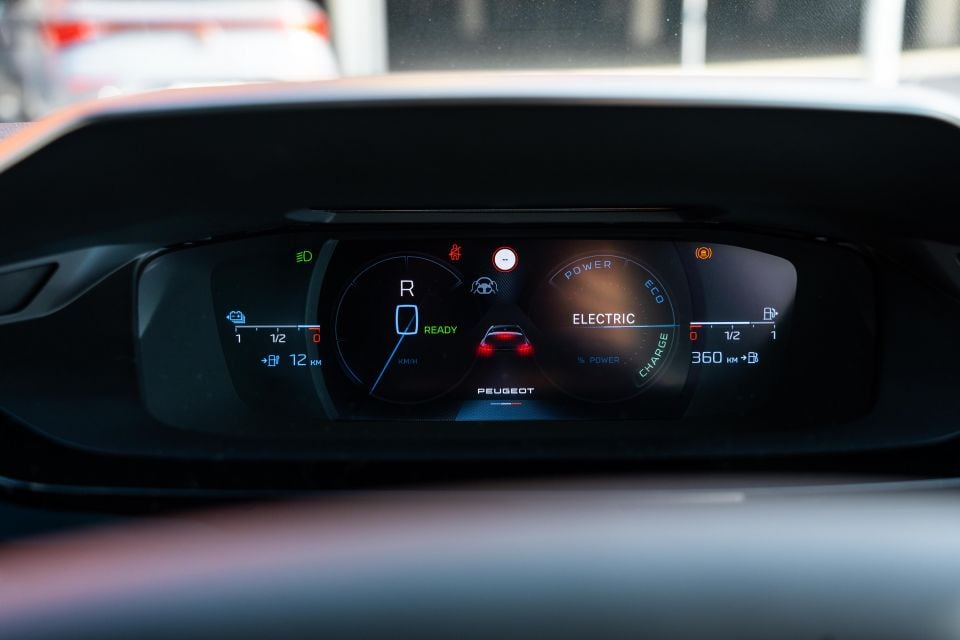
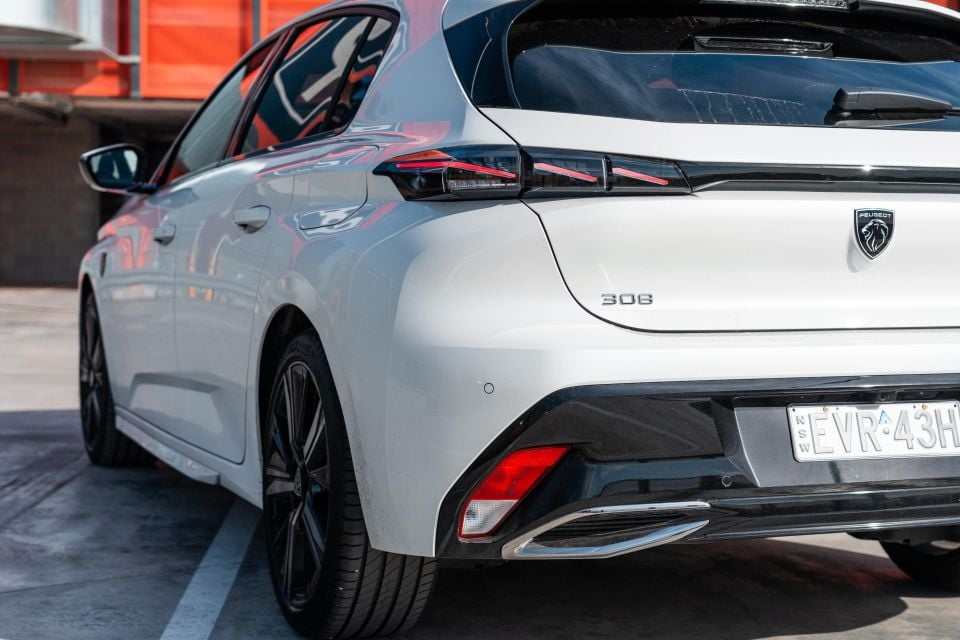
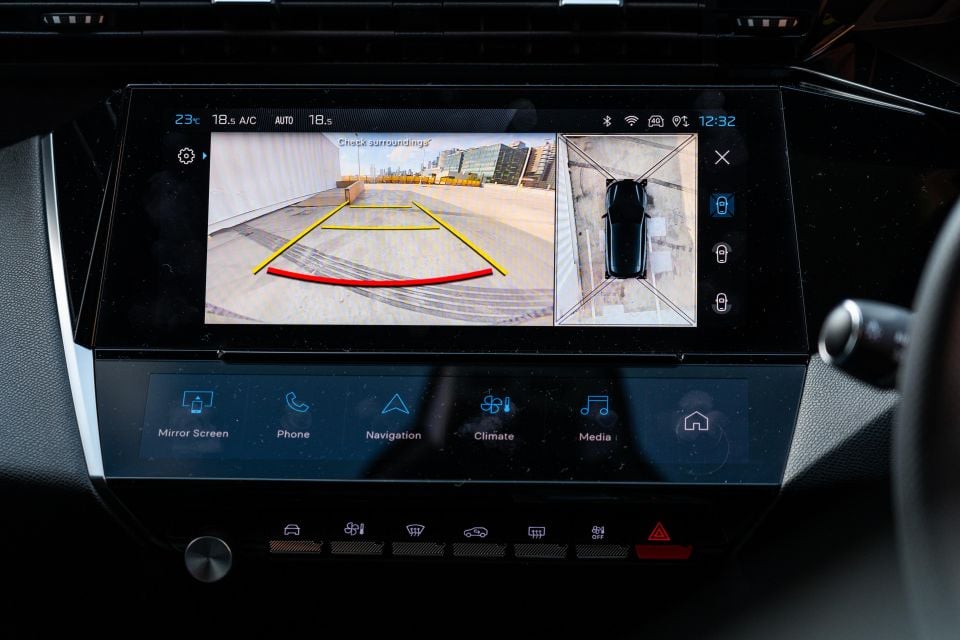
Peugeot 308 GT Sport Hatch Plug-in Hybrid highlights:
Options:
Metallic paint: $690 Premium metallic paint: $1050
Cupra Leon
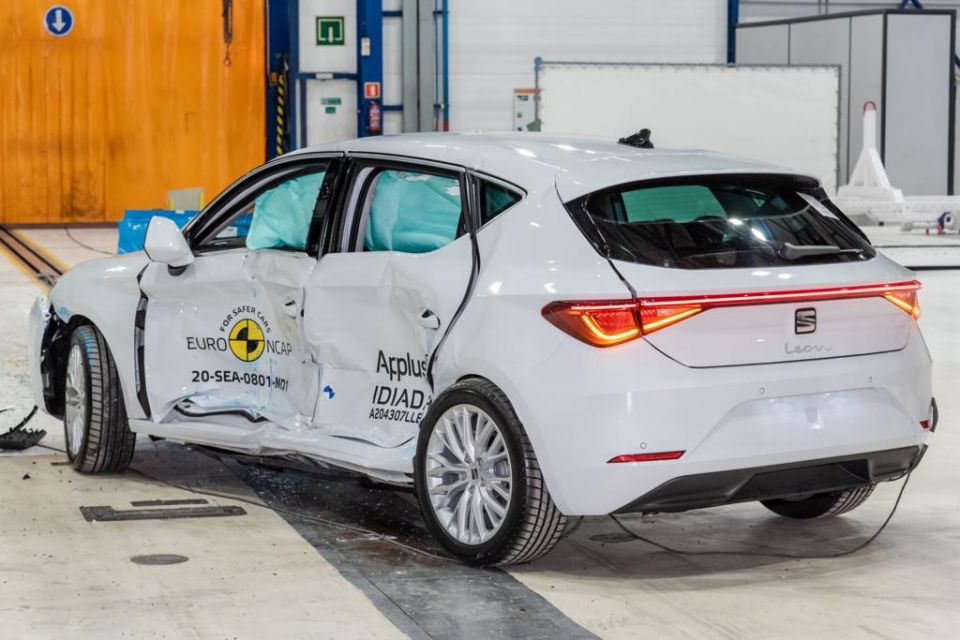
The Cupra Leon wears a five-star ANCAP safety rating, based on Euro NCAP testing conducted on the SEAT Leon in 2020.
It received an adult occupant protection rating of 91 per cent, a child occupant protection rating of 88 per cent, a vulnerable road user protection rating of 71 per cent, and a safety assist rating of 80 per cent.
Standard safety equipment includes:
Peugeot 308
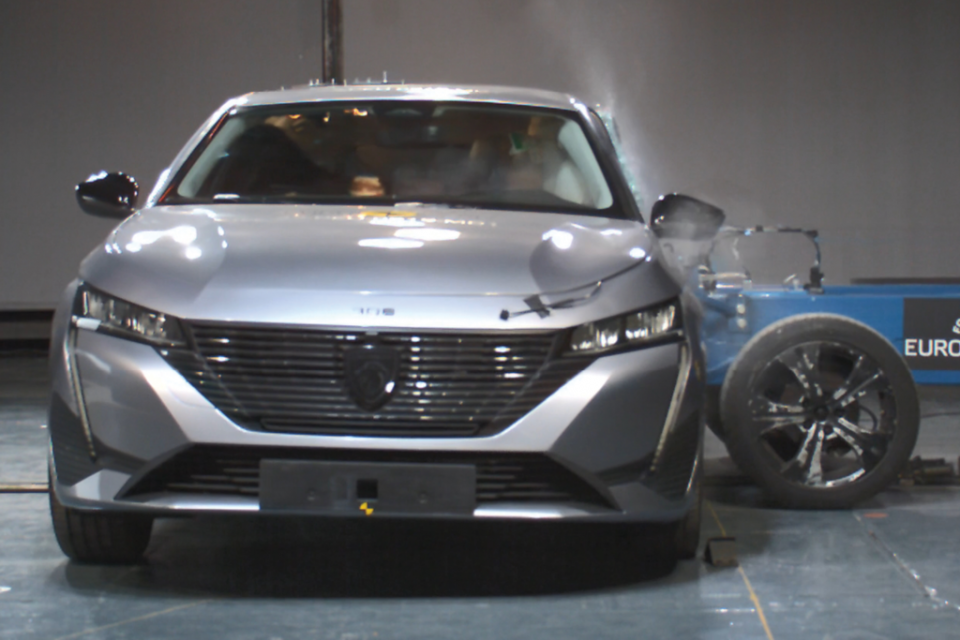
The 308 wears a four-star ANCAP and Euro NCAP safety rating, and part of the reason it didn’t fare as well as it could have is down to the adult occupant protection in a crash, which at 79 per cent, isn’t terrific.
Other scores included child occupant protection (86 per cent), vulnerable road user protection (68 per cent) and safety assist (82 per cent).
Standard safety features include:
308 GT Premium adds:
Cupra Leon
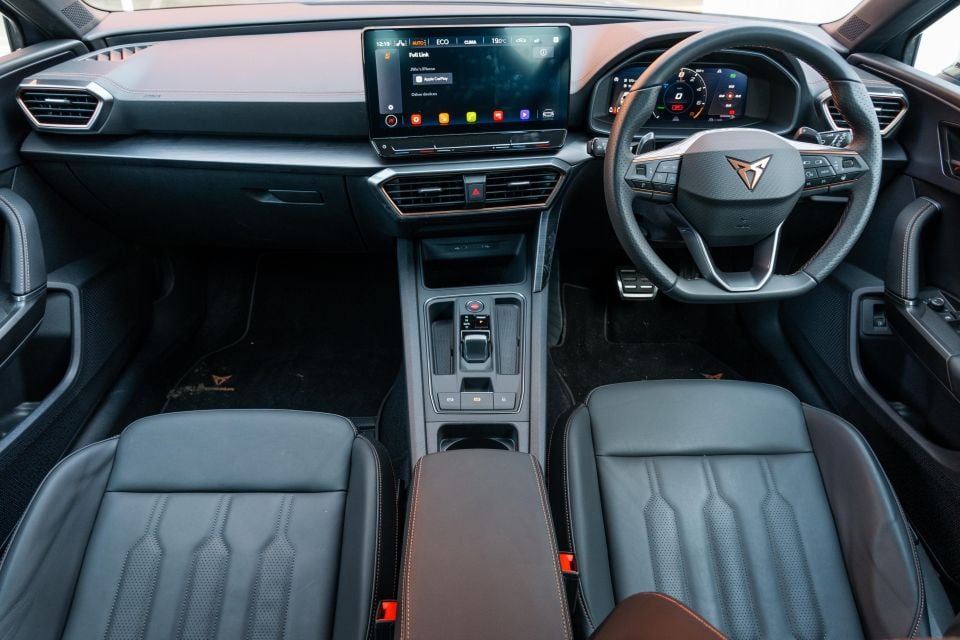
Based on the same MQB evo architecture as the Volkswagen Golf and Skoda Octavia, there’s a strong sense of familiarity when you hop inside the Leon.
The minimalist design focuses on straight lines and a pared back approach to physical switchgear, meaning key cabin functions are accessed via the touchscreen.
While we’re generally quite critical of the Volkswagen Group’s current crop of touch-heavy interiors, Cupra’s take seems to be the better approach, with a more user-friendly interface leaning on dedicated shortcuts in the touchscreen.
Still, the touch sliders for temperature and volume aren’t backlit which can be annoying if you’re trying to adjust on the fly, but you can also easily just ‘set and forget’ and the volume can be toggled via steering controls.
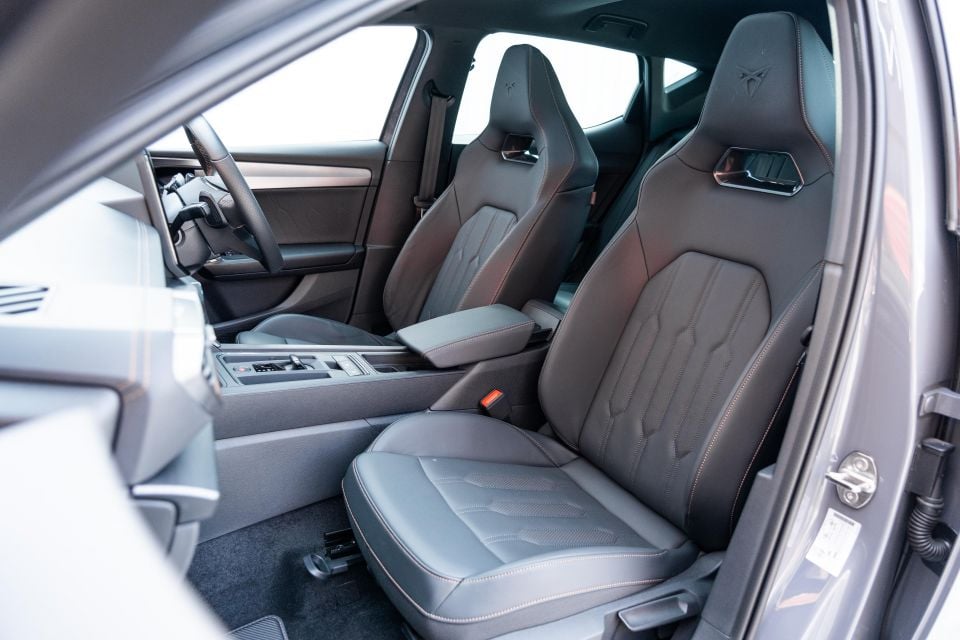

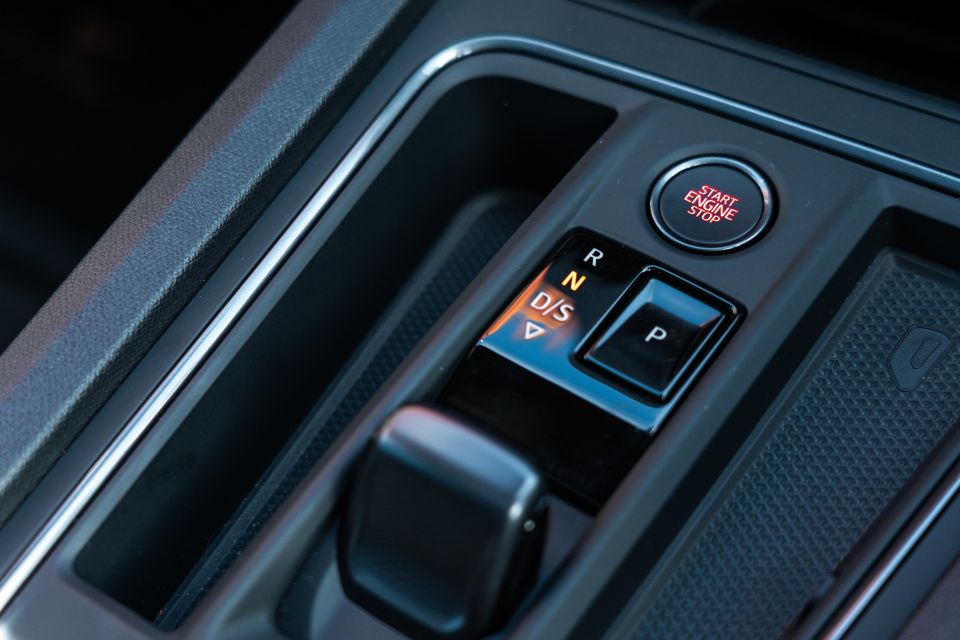

The optional leather seats in our test car with power driver adjustment are lovely, with the hide feeling smooth and supple to touch, while the extendable thigh cushion for the driver is greatly appreciated. You also get memory presets for the driver, which also saves the mirror positions too.
One-piece backrests are a racy touch, including embossed Cupra logos in the headrests. It’s a shame the passenger seat isn’t powered, but both front seats feature heating.
The big 12.0-inch touchscreen beats the Peugeot for outright size, but the 308’s 10-inch unit appears to offer better resolution and clarity.
That said, I’d argue the Cupra’s unit is snappier and offers more fluid animations. Wireless Apple CarPlay connected quicker too, though it was also more susceptible to dropouts in known Melbourne dead spots.
I’d also pick the Leon’s 10.25-inch Digital Cockpit virtual cluster over the Peugeot’s 3D unit every day of the week, which has its French rival beat for clarity, configurability and ease of use. My personal favourite layout is the single central tachometer dial which harks back to Audi’s R8 supercar.
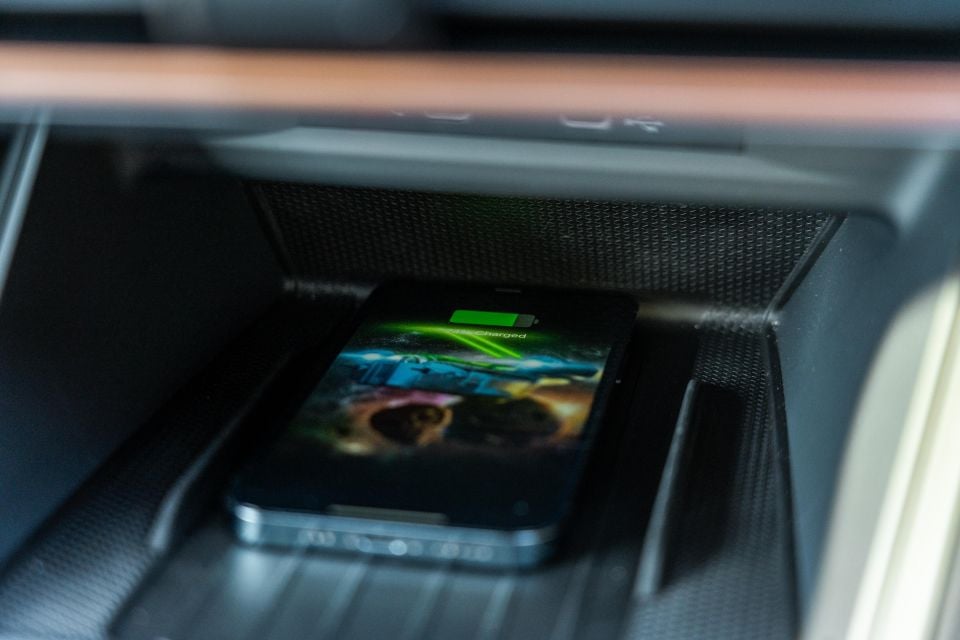
Storage between the two is about even, with dedicated shelves for wireless phone chargers, decent cupholders and decent bins under the centre armrest and in the doors. Both have their centre consoles freed up by the use of stubby shift-by-wire selectors.
Perceived material and build quality is good in isolation, but it doesn’t feel anywhere near as posh as the Peugeot.
There’s a good amount of soft-touch surfaces, but the plastic brushed elements masquerading as metal as well as the trims lining the centre console definitely don’t feel particularly expensive.
I’ll add that the Cupra’s more open plan design feels less driver focused than the Peugeot’s wraparound layout and higher belt line. Many will prefer the Leon’s more conventional steering wheel and instrument cluster positioning, however.
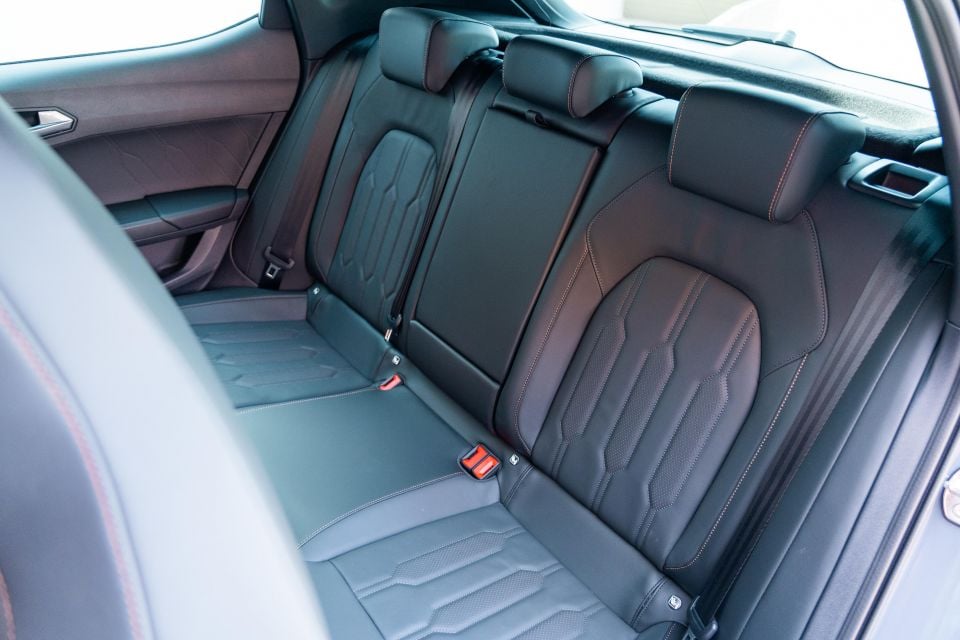
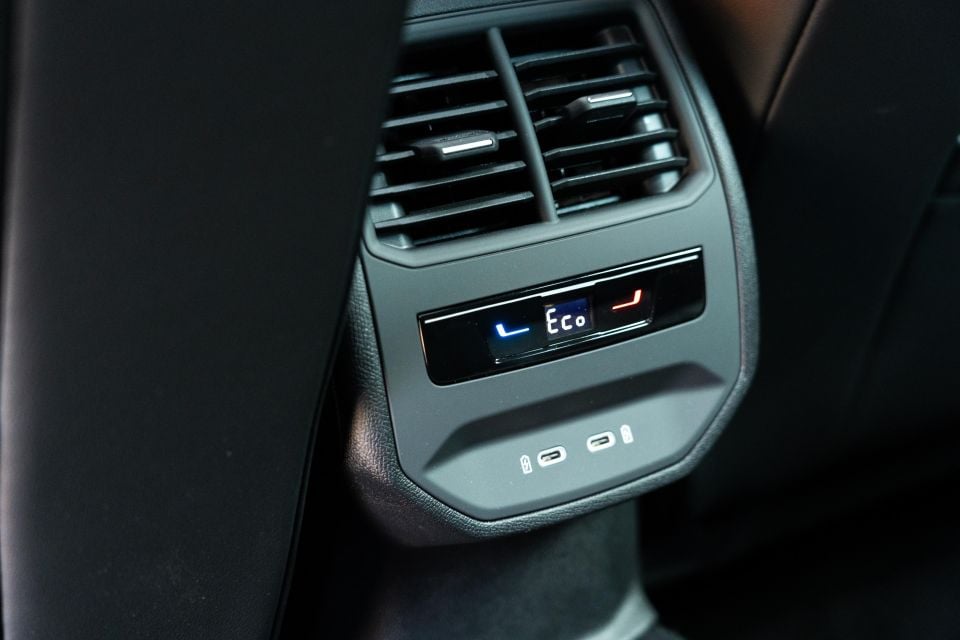
The Leon is the clear winner if you’re regularly carting people around in the back, with enough head, knee and leg room to fit 6’1 me behind my own preferred driving position – the 308 is noticeably tighter in the rear.
You also have extra runs on the scoreboard thanks to the third zone of climate control, which is toggled via the touch-capacitive buttons at the rear of the centre console. A pair of USB-C power outlets feature too.
Other rear seat amenities include a fold-down armrest with cupholders, ISOFIX anchors on the outboard seats with top-tethers across all three rear positions, as well as decent-sized bottle holders in the doors. You also get map pockets behind the front seats.
Perhaps the only real gripe about the rear seat accommodation is the fact the chunky sports seats up front limit visibility from the second row, meaning nausea-prone passengers may not have the best time. Thankfully, the big rear windows let in plenty of light.
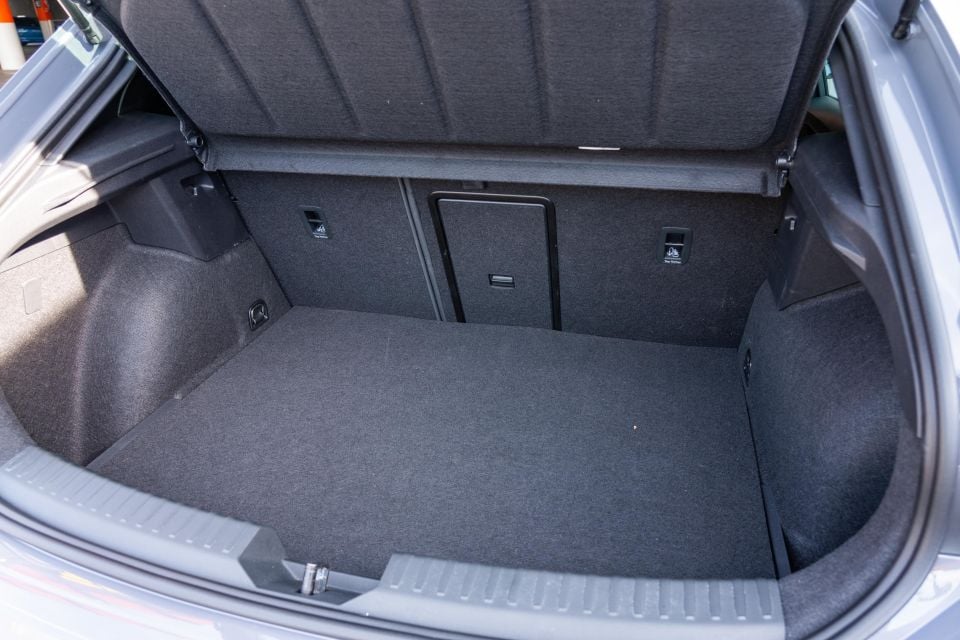
Perhaps the Leon e-Hybrid’s biggest downfall in the switch to an electrified drivetrain is the impact it’s had on the boot area. At 270L with the rear seats in place, it’s smaller than most light hatchbacks, 110L down on petrol versions, and nearly 100L off the Peugeot.
The space itself is still wide and square, but it’s a shame the environmentally-friendly option is so compromised in the boot. There’s a ski port as well to allow longer items to sit between the two rear passengers, and when the second row seat backs are folded, they lie pretty flat.
Having the battery mounted under the boot floor also means you lose the space-saver spare tyre that’s standard in other Leon models, instead featuring a tyre repair kit.
Peugeot 308
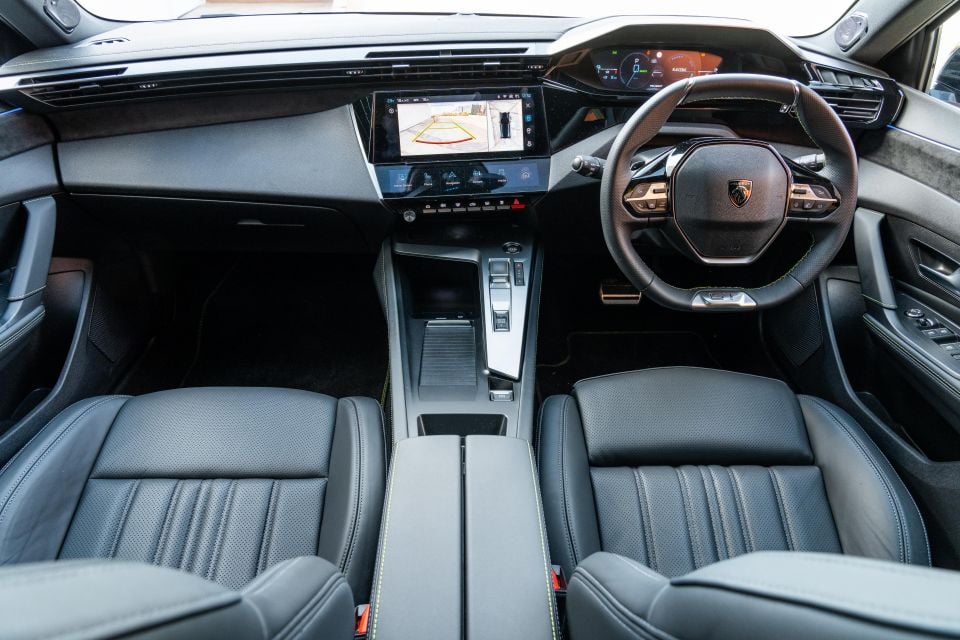
Where expert car reviews meet expert car buying – CarExpert gives you trusted advice, personalised service and real savings on your next new car.
Initial impressions of the 308 when you first hop in are très magnifique.
The Nappa leather upholstery and matching padded leatherette sections throughout the interior make this quite the luxe small car, and I’ve gone on record previously to say this has the nicest interior of any small passenger vehicle on the market right now – premium brands included.
It feels a cut above in the perceived quality stakes, with more luxurious trimmings spread out more liberally. It should dispel the perception French brands can’t match the Germans for cabin presentation and quality.
Like the Cupra there’s electric adjustment for the driver’s seat with memory presets – although it’s standard in the Peugeot – as well as an extendable thigh cushion. Both front seats are heated as standard.
Peugeot’s i-Cockpit interior layout will be a little weird for some – the small wheel and high-set instruments make this feel like a racing simulator rather than an actual car, and certain body types may find it hard to get the steering wheel into a position that doesn’t obstruct the cluster whilst also not knocking your knees. I managed, but not everyone does.
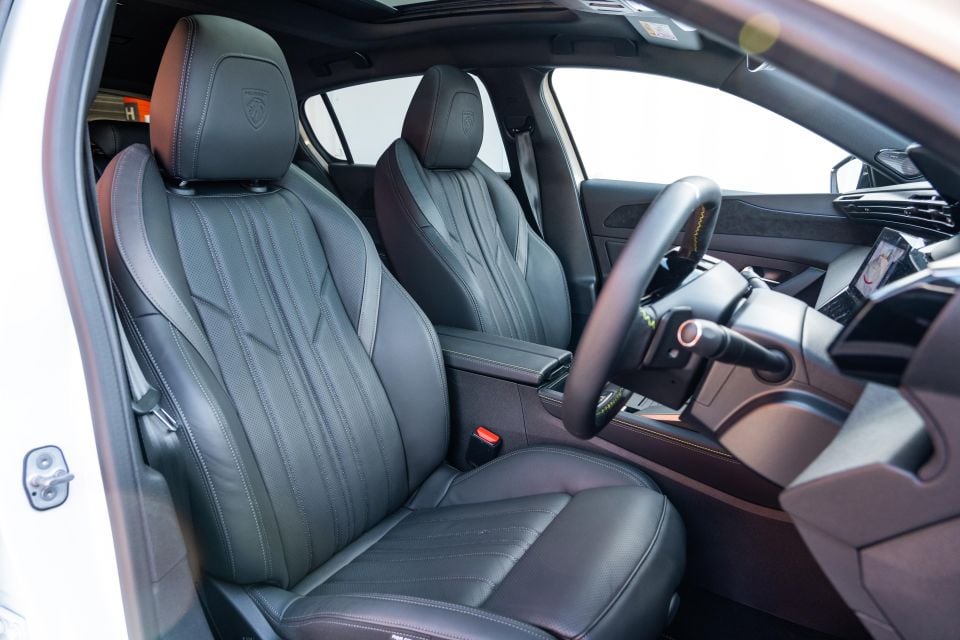


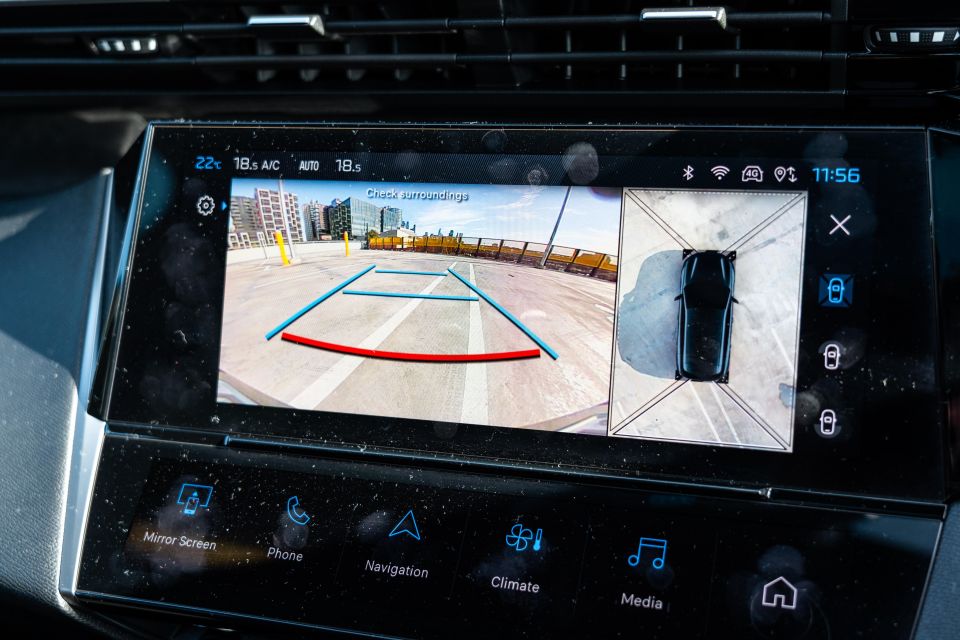
I felt perched a little higher in the Peugeot than the Cupra, but the seats up front are very comfortable and support you from every angle – the extendable bottom cushion is great for leggy drivers like myself.
The 10-inch 3D digital instrument cluster should be a match for the Leon on paper, but it’s super slim and nowhere near as bright or as detailed in its presentation. It’s a cool and unique design that is an evolution of the most recent generation of Peugeot products if that’s your thing, and you can change to 2D if the three-dimensional look is a little too much for you.
Peugeot’s funky approach to steering wheel controls also means it’ll take a few goes for you to figure out how to toggle through the menus and layouts of the cluster, as well as skip audio tracks. Once you get it though, it’s easy.
The 10-inch central touchscreen gets a big thumbs up for brightness, clarity and resolution – but, it’s not quite as snappy as Cupra’s system. The configurable touch bar underneath means you can set shortcuts for your preferred functions.
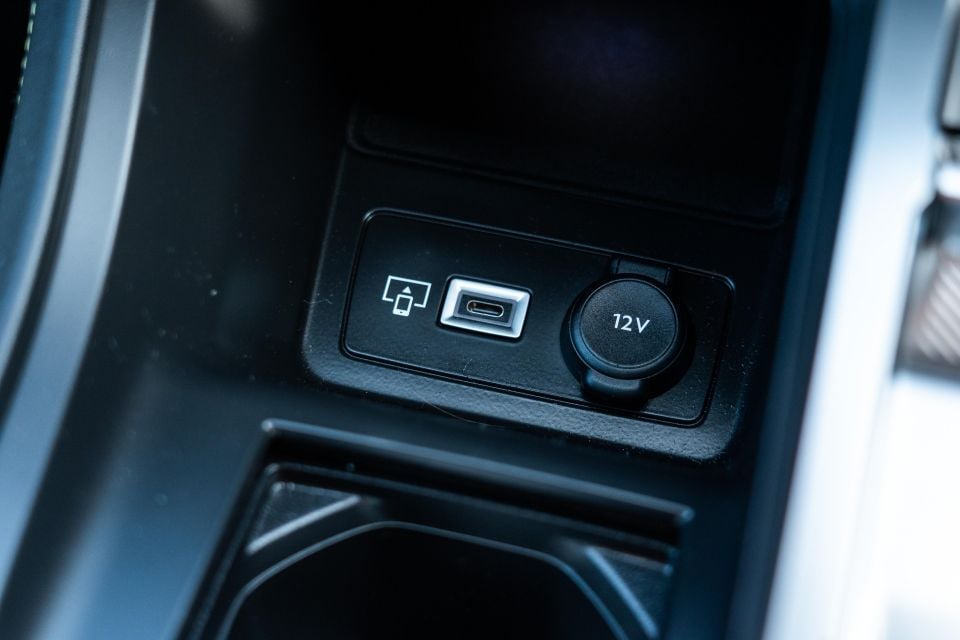
It has standard connected services too (three-year subscription) which the Cupra cannot match, offering online navigation with live traffic and updates, car park information and fuel prices, as well as web map search and speed camera alerts. It also gets monthly wireless map updates from TomTom, and supports over-the-air software updates.
Most owners will bypass the native system to use wireless Apple CarPlay or Android Auto anyway, and this worked seamlessly the entire time we had the 308.
While the Leon can now be had with a nine-speaker Beats premium sound system for MY24 – which in other models we’ve observed as being good if not quite standout – the Peugeot’s 10-speaker Focal premium Hi-Fi setup has better depth and bass, feeling a bit more high-end.
Storage is good too, with cupholders hiding under a sliding drawer, a shelf for your phone with a wireless charger (phones tend to slide around a bit), a double-lidded cubby under the armrest, and deep door bins that can swallow larger bottles.
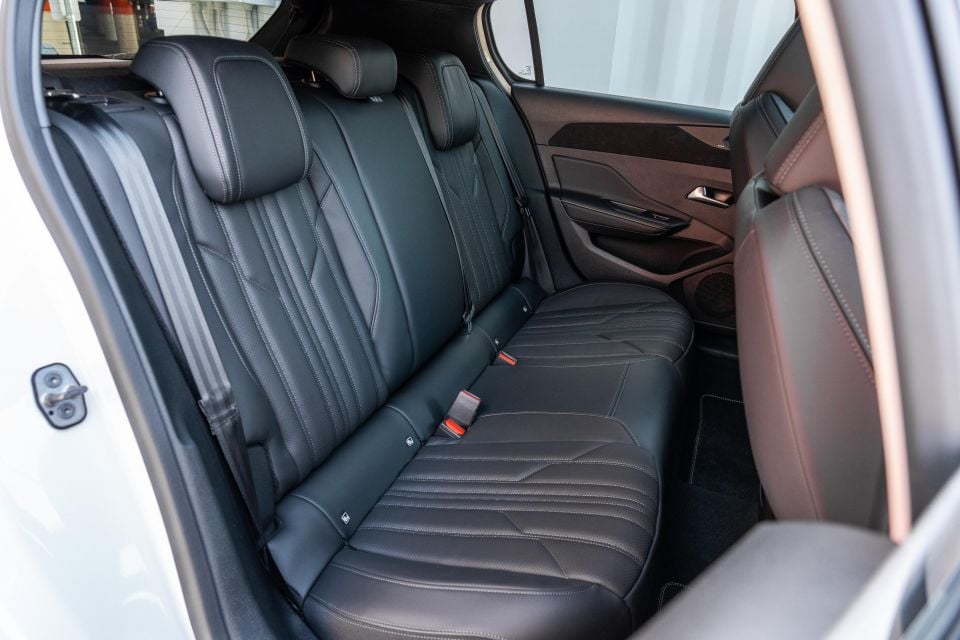
The 308 prioritises boot space over rear seat room, so if you regularly have taller passengers hopping in with you they might be a little squished back there.
Knee room is the main issue; I was fairly short on it when trying to sit behind my preferred driving position. Kids and smaller adults should be fine, though.
There are rear air vents, door bins and map pockets, but there’s no fold-down armrest with extra cup holders – again proof that this isn’t as focused on carrying second-row passengers.
It does match the Cupra in offering ISOFIX anchors and top-tether points, though the reduced space in the rear may make it harder to fit larger child capsules – there is a 308 Wagon with longer wheelbase, but it doesn’t have a PHEV option in Australia.
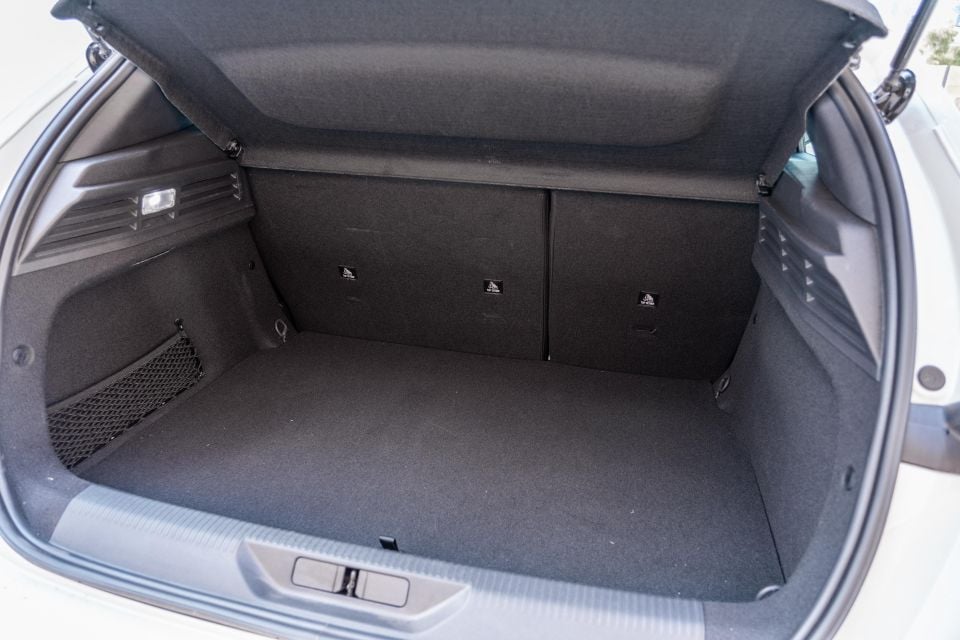
With 361 litres of luggage capacity behind the second row, the 308 PHEV easily bests its Spanish rival and almost matches non-hybrid versions of the Leon. Peugeot also quotes 1271L with the rear seats folded.
It’s only about 50 litres off the non-PHEV 308 Hatch, and is a nicely wide and square space. It also has a netted side section for stowing loose items, which the Cupra also lacks.
All versions of the Peugeot 308 have a tyre repair kit fitted.
Cupra Leon
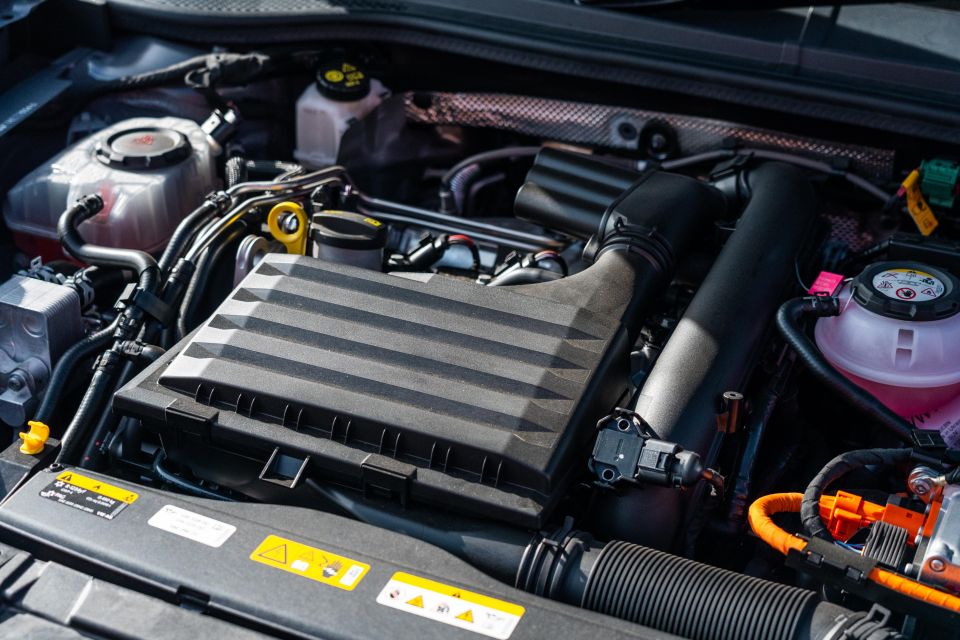
Power in VZe versions of the Leon and Formentor comes from a 1.4-litre turbocharged plug-in hybrid system that drives the front wheels via a six-speed DSG dual-clutch (wet type) automatic transmission.
The 1.4 TSI is a 110kW/250Nm unit from the Golf and Tiguan, paired with an 85kW electric motor and 12.8kWh lithium-ion battery pack. System outputs are rated at 180kW and 400Nm, essentially matching the Leon VZ 2.0 TSI (180kW/370Nm), with 0-100 taking a claimed 6.7 seconds – 0.3 seconds off the petrol-only VZ.
Cupra claims the Leon VZe can travel up to 67 kilometres on a full charge, with combined fuel consumption rated at 1.8L/100km and an emissions rating of 40g/km.
The official energy consumption claim is 11.3kWh/100km on the more NEDC cycle – WLTP specs stipulate 15.1-15.9kWh/100km depending on how the vehicle is optioned.
The Leon VZe has a 40 litre fuel tank compared to the 50L unit in other variants, and the drivetrain is Euro 6 certified, including a petrol particulate filter (PPF) like the wider range – something differentiating Cupra from most local Volkswagen Group models. Minimum 95 RON fuel is essential.
Peugeot 308
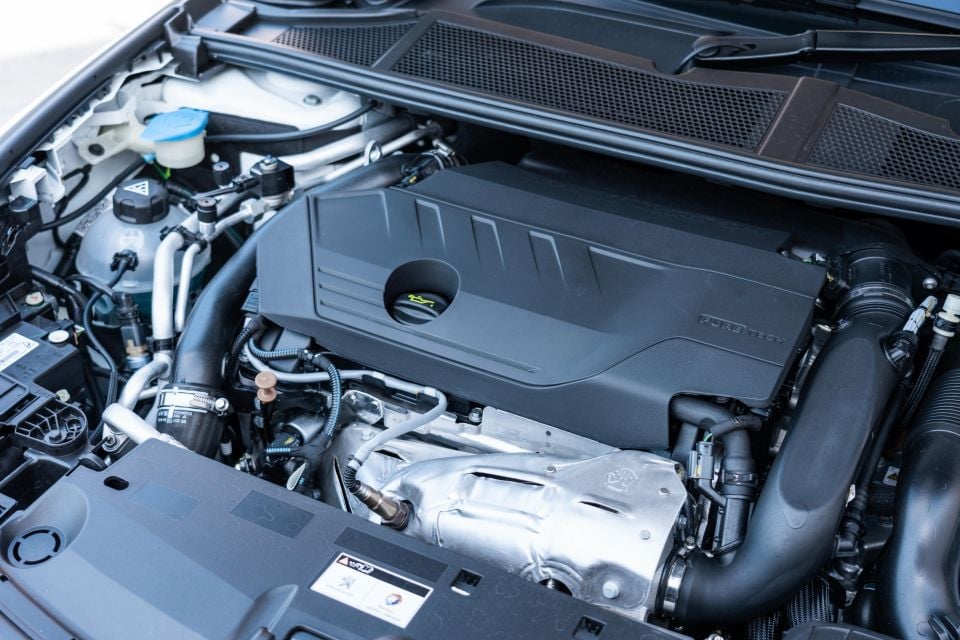
The plug-in hybrid GT Sport features a turbocharged 1.6-litre four-cylinder petrol engine with 132kW of power, teamed with an 81kW electric motor and eight-speed automatic transmission.
The transmission is a derivative of the Aisin-soured EAT8 auto used in other Peugeot models, but with the torque converter in the transmission being replaced by a clutch pack. It’s front-wheel drive only.
System outputs are 165kW and 360Nm, which is a fair whack more than you get out of the petrol-only models with their 1.2-litre turbo-triple pumping out 96kW and 230Nm. The 0-100km/h claim is 7.5 seconds, which is 0.8s off the Cupra.
It’s hooked up to a 12.4kWh lithium-ion battery which quotes up to 60 kilometres of electric range on the WLTP test cycle. The official combined cycle fuel consumption figure is an impressive 1.3 litres per 100 kilometres.
The maximum AC charging rate is 3.7kW. Peugeot claims the battery will recharge from 0-100 per cent in approximately 3.5 hours from a wallbox, and approx 5.5 hours from a domestic household plug. You get a cable for that included with the car.
Cupra Leon
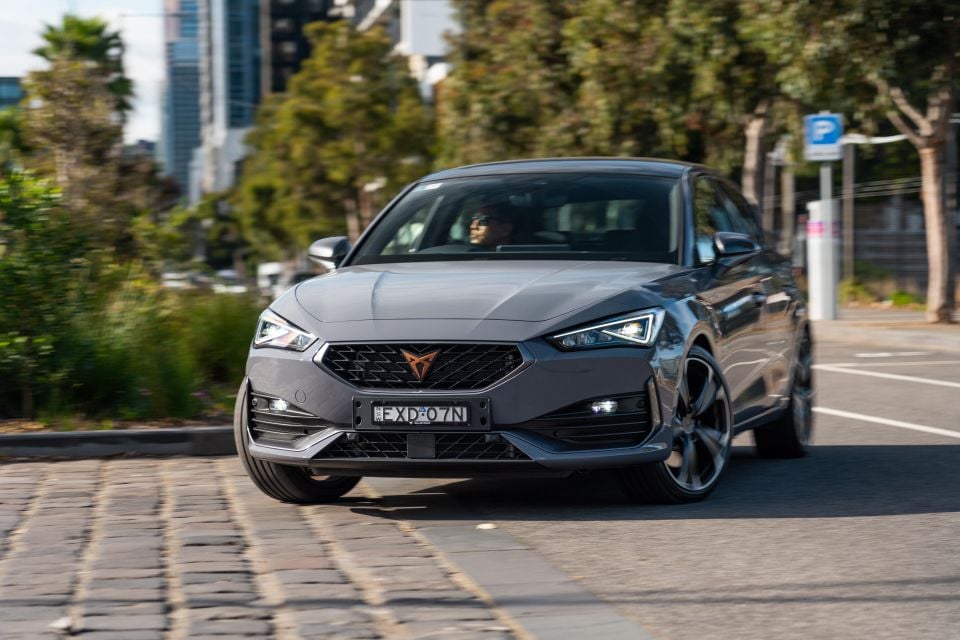
From the moment you get in and start rolling, the Leon VZe makes it clear it’s the sportier of the two vehicles here.
The plug-in hybrid Leon is pitched as a proper hot hatch, with a power output matching the Golf GTI and 30Nm more torque (400Nm v 370Nm).
While the outputs are impressive on paper there’s a lot at play here, and the Leon PHEV has a few different sides to it depending on how you’re driving and which of its modes you’re using.
On its own the e-motor, mounted between the transmission and engine, makes 85kW and a healthy 330Nm – the latter on tap pretty much from the moment you touch the throttle. In other words, the Leon PHEV in electric mode has similar punch to what you’d expect from an entry-level Euro diesel, minus the noise.

While it never feels fast in EV mode, the VZe is responsive off the line and is capable of getting up to freeway speeds without the assistance of the petrol engine. Occasionally you’ll feel the dual-clutch auto shift through cogs as you get going, but it’s anything but unrefined or jarring.
On start-up the Leon VZe defaults to EV mode and prioritises its Comfort profile, which in normal driving is probably best. Ride comfort even on 18-inch wheels is impressive, and insulation from wind and road noise is good, even with the absence of engine noise most of the time.
The controls are light and accurate, meaning it’s easy to pilot in everyday situations and won’t be a task to park. The beauty of having well-calibrated drive modes means you can dial things up or down as you see fit.
Pop it into Cupra and it firms up a bit, without being uncomfortable or overly heavy in the controls. Be more liberal with the throttle and the 1.4 TSI petrol engine involves itself more, and when you bury your right foot it’ll light up the tachometer in blue as it engages Boost mode, offering up all 180kW and 400Nm available.
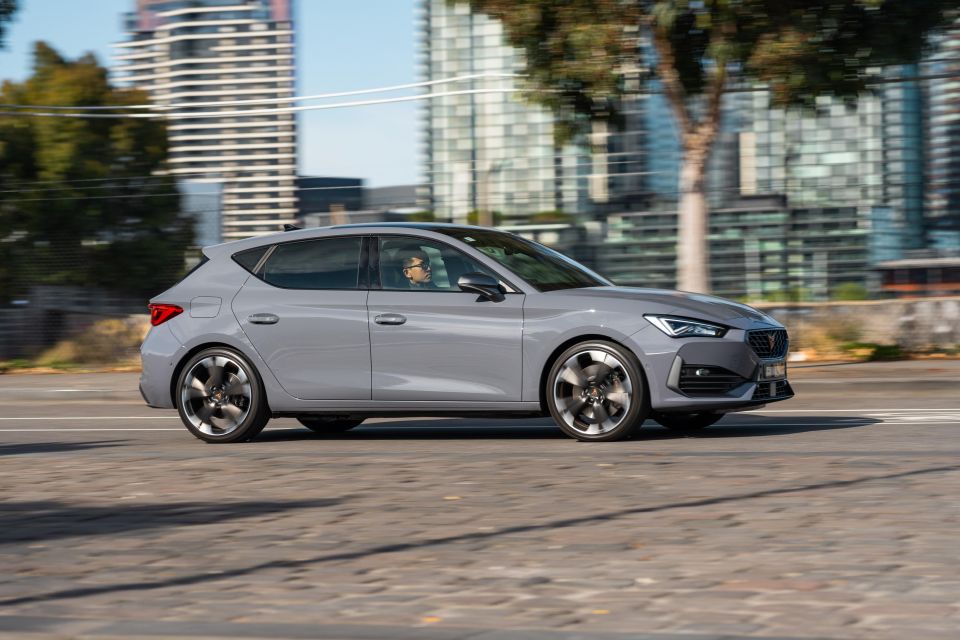
It pulls hard, feeling about as quick as the brand’s 6.7-second 0-100 claim suggests, and more aggressive drive modes pump a synthesised engine note akin to a brassy V6. While we know it’s a four-cylinder under the bonnet, the muscular low-end and linear response right through to the top end makes it feel bigger, so I guess it works.
The engaging soundtrack and strong performance are quite addictive, and I tended to leave the Leon in these modes on more spirited stints. It’s noticeably more eager than the Peugeot, and feels like a proper performance offering by comparison.
When things get twisty, the Leon VZe doesn’t feel quite as lithe as its combustion-engined stablemates, but it’s capable of putting a smile on your face. In the context of this comparison it feels like a hot hatch compared to the Peugeot, which doesn’t feel like it enjoys being punted up a winding road.
For the most part there’s good grip, but at the limit you’ll feel the front wheels scrabble for traction as it tries to put all 400Nm to the tarmac. This doesn’t get the proper electromechanical front diff like its petrol siblings, but it does offer torque vectoring via braking.
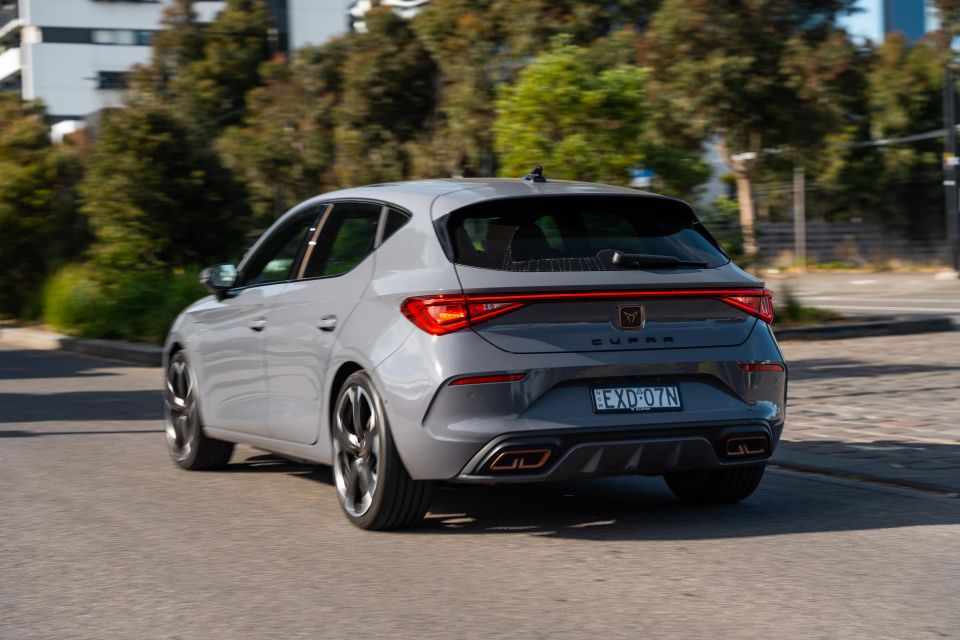
You can also take control of gears yourself using the paddle shifters, and the Leon’s DSG does a good job at responding to inputs as you’d expect from a non-hybrid hot hatch.
As for battery and range, we consistently managed between 50 and 60 kilometres in mixed driving conditions, as well as colder Melbourne temperatures. I drive 10km early in the morning to go to and from the gym, then my commute to the CarExpert Melbourne office is 24km each way.
I’d have the battery just about to run out of EV range as I got home at the end of the day, equating to 58km of real-world EV range – about bang on the WLTP claim of 55-60km.
Once the battery runs out of EV range, it defaults to running like a Toyota-style hybrid, using the electric motor to set off and drive under low throttle, and firing up the petrol engine once the hard work setting off is done – it’s pretty efficient when operating in this mode too.

Both vehicles offer a full suite of active driver assistance systems, and the Cupra’s access to Volkswagen’s tech suite pays dividends. Travel Assist remains one of the headline acts, combining adaptive cruise and active lane-centring features to facilitate Level 2 autonomy on the highway.
It’s one of the more intuitive and accurate systems on the market, though I did notice the adaptive cruise control can be a little conservative if someone cuts into the lane ahead of you, or is travelling a few km/h lower than your set speed.
Blind-spot monitoring and rear cross-traffic alert are all handy to have, but aren’t necessarily any better or worse than what the Peugeot has to offer.
Peugeot 308
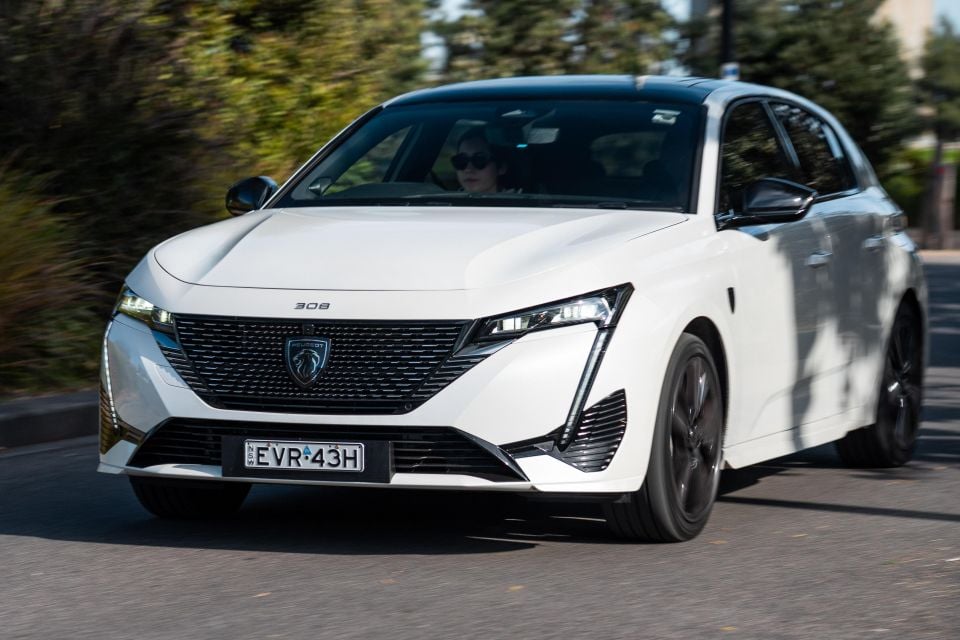
Like the Cupra, the bulk of my time in the 308 was spent commuting to and from the office, which meant I spent most of my time using the EV portion of the drivetrain.
Melbourne’s chilly winter temperatures no doubt had an impact on electric driving range in both cars, and I couldn’t manage any better than 45-50km in the Peugeot before I heard that 1.6-litre petrol engine quietly fire up to assist.
When operating as an EV, the Peugeot seems to have a little less responsiveness and refinement than the Cupra, with a bit of lag in response off the line and the occasional jerkiness at parking speeds. Despite the electric motor offering 81kW and 320Nm which is well within reach of the Cupra’s 85kW/330Nm, it feels notably more relaxed.
Once moving, though, the silent driving characteristics of EV motoring combined well with the 308’s more luxurious pitch – it’s definitely leaning into that GT badge.
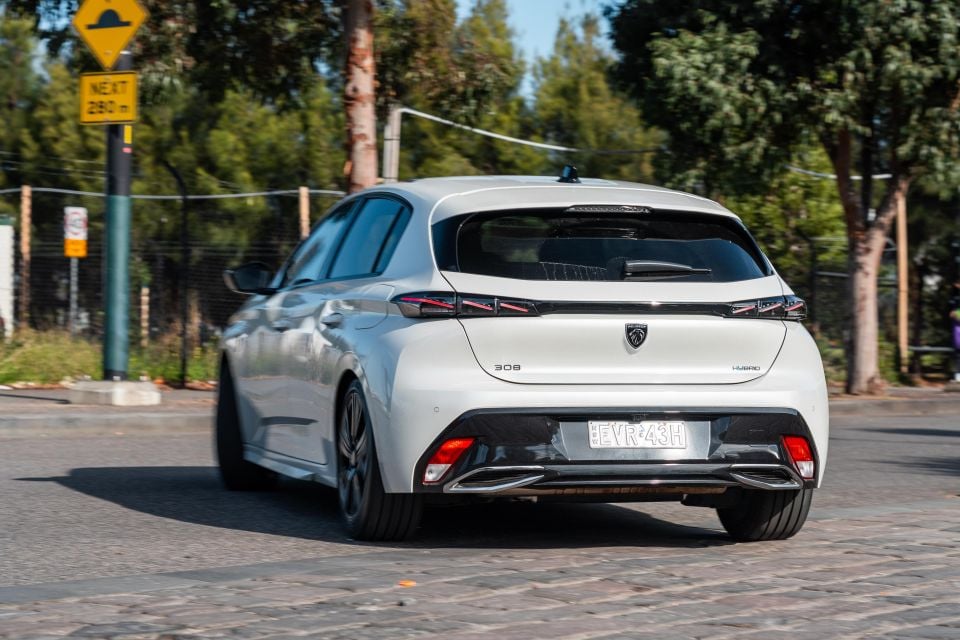
It feels firmer than the Cupra in normal driving as it lacks the Leon’s adaptive dampers, and it runs a torsion beam rear axle compared to its rival’s multilink rear. As a result, at times it is a little sharper over things like tram tracks, but is far from crashy or unrefined.
The little steering wheel is hooked up to a quick ratio rack, which makes the Pug’s feel pointy and keen to turn. Couple that with a taut chassis and the Peugeot does the Euro firm thing pretty well, balancing comfort and dynamics nicely if a little on the firmer side in town as noted earlier.
Both of these vehicles are pretty light as far as PHEVs go, quoting tare masses of around 1.6t. The Peugeot’s tighter tuning makes it feel that little bit lighter on its feet for daily duties, but it’s not the more athletic of the two as the speeds rise.
The Peugeot is happiest when cruising on the highway or down smooth suburban streets. It’s prone to understeer in harder corners, and the 308 PHEV’s range-friendly Michelin Primacy 4 tyres sacrifice grip in the pursuit of low rolling resistance and maximum EV range.
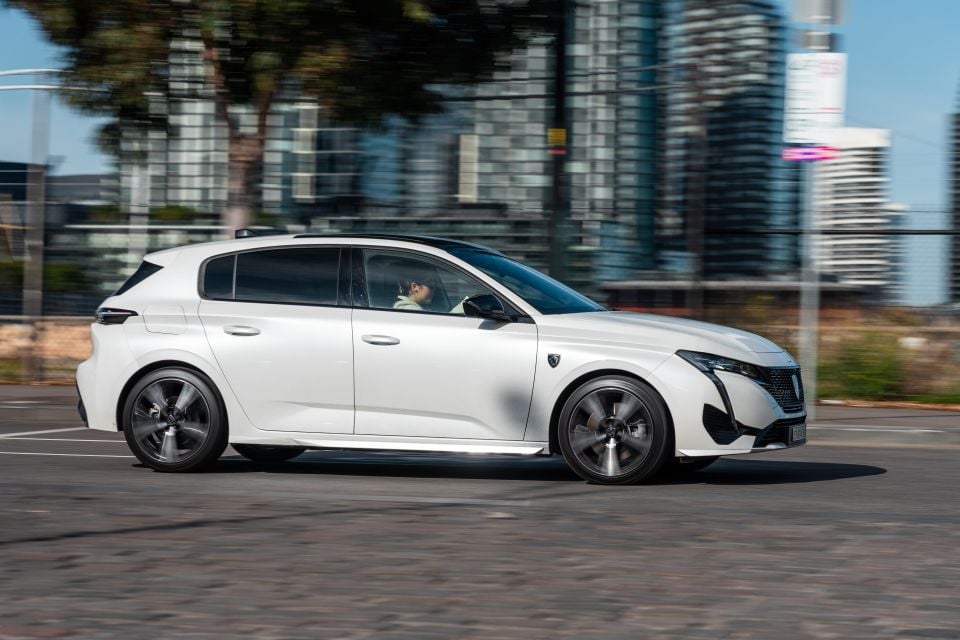
When driving as a hybrid as opposed to an EV, the Peugeot falls behind its Spanish rival. The 1.6-litre motor is quite gruff on cold start and doesn’t have the same meaty torque wave that shoves you in the back despite it offering a not-insignificant 165kW and 350Nm on paper.
Peugeot also hasn’t bothered with a sound synthesiser for the engine, meaning it can be quite thrashy and unrefined if you gun it. With that said, it’ll get up and boogie if you need it to, and flicking it into Sport mode sharpens everything up noticeably.
The 308’s Active Lane Positioning Assist combines with the adaptive cruise control to offer a semi-autonomous highway driving mode, and like the Cupra’s Travel Assist it works well, taking the load off longer trips. The Peugeot’s 360-degree camera view bests the Leon’s rear only camera, and it matches its rival’s inclusion of blind-spot and rear cross-traffic detection – all working well too.
I will also note the Peugeot was better insulated than the Cupra on the open road, potentially down to the difference in tyres (Bridgestone Potenza S005 v Michelin Primacy 4), as well as better sound insulation.
Cupra Leon
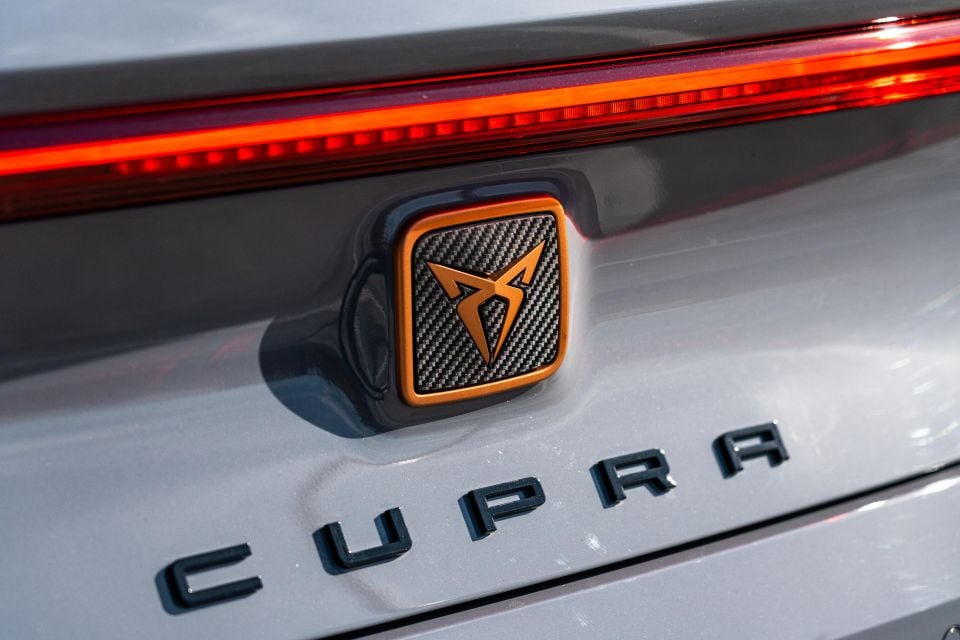
Like the wider Cupra range in Australia, the Leon is covered by a five-year, unlimited-kilometre warranty.
For models with high-voltage battery components, there’s an additional eight years or 160,000 kilometres cover against manufacturing defects or “excessive loss of net battery energy”.
Cupra also throws in three years of complementary scheduled servicing with all models, which represents a saving of around $1200-$1500 based on what Skoda and Volkswagen charge. You can add a two-year Service Pack to extend coverage to five years or 75,000 kilometres – pricing for plug-in hybrid models is $1400.
I managed an indicated 2.6L/100km over 194km of mixed driving, though there were a couple of occasions where I ventured further than my usual routine which exceeded the EV driving range. With nightly charging and regular use, you can easily match Cupra’s 1.8L/100km claim.
Peugeot 308
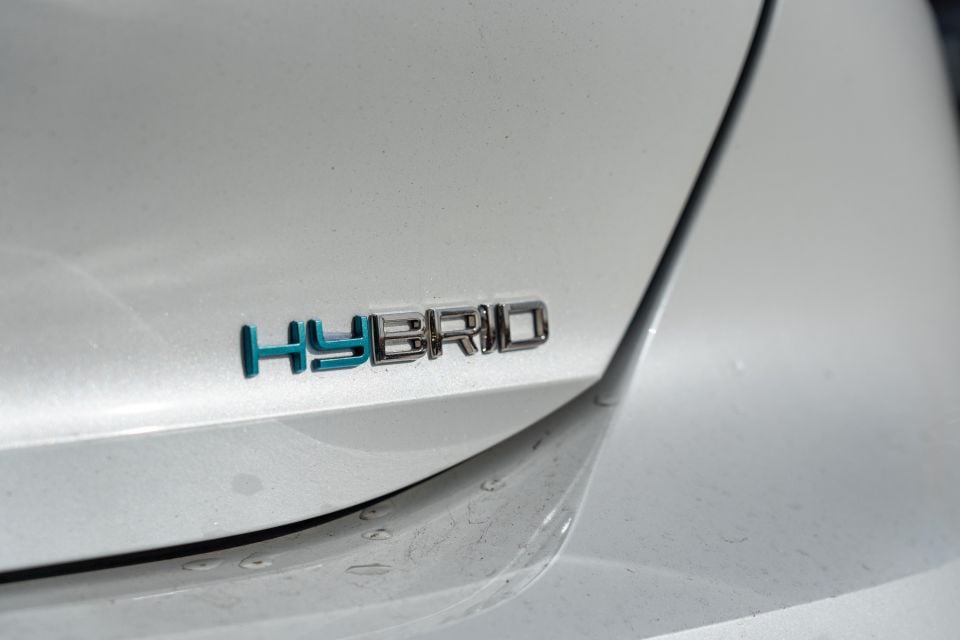
There’s a five-year, unlimited-kilometre warranty for the car, and the PHEV’s battery pack is covered by an eight-year/160,000km warranty – guaranteed to have 70 per cent capacity by the end of the warranty period.
Servicing is required every 12 months or 15,000km, whichever occurs first.
The brand offers a couple of relatively affordable servicing plans if you pay ahead – there’s a three-year plan at $1200, or five years at $2000. So, $400 a year for maintenance for a French hatch.
I spent a little more time in the Peugeot over the course of the week, usually charging nightly and doing my usual commuting with some extra errands thrown in here and there. Over 436 kilometres, the trip computer was showing an impressive 2.3L/100km.
Should you spend more time on the highway, the Peugeot’s extra two cogs over the Cupra likely give it a slight efficiency advantage, particularly once the petrol engine is in play.
While these two electrified hatchbacks appear to have similarities on paper, they’re aimed at very different buyers.
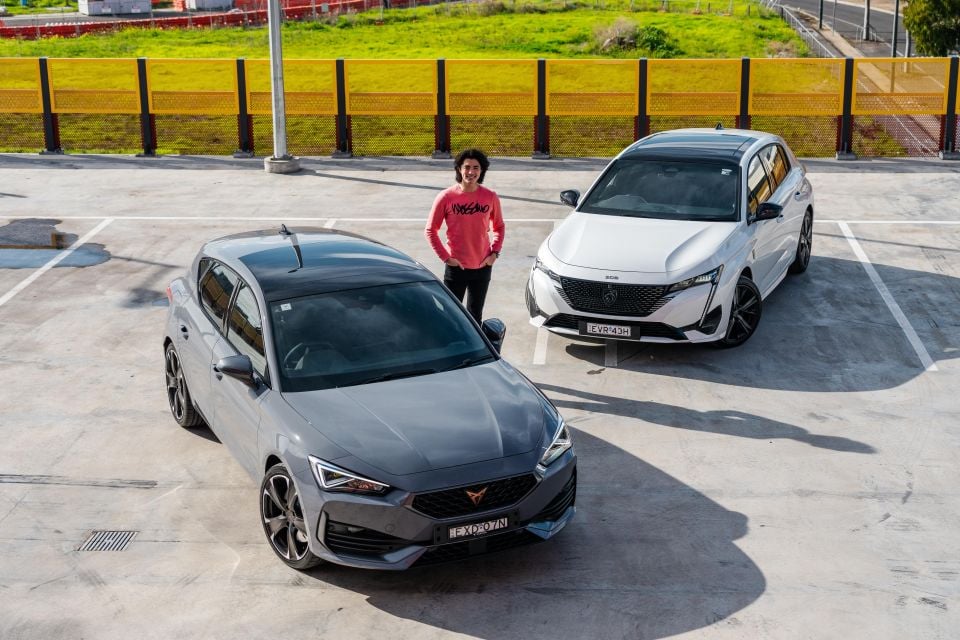
The Cupra Leon VZe does the better job at emulating actual hot hatches in the way it performs and handles, so if you’re a keen driver and want something involving that also is environmentally conscious, it’s the better pick here.
It also offers better real-world electric driving range, has a better-rounded drivetrain that feels more refined, and it’s also better at carrying people. But, the fact it requires options ticked to match the Peugeot’s standard specification which also sees it lose its base price advantage, as well as a cheaper-feeling cabin are relative gripes.
Conversely, if you want something with a bit of punch and responsive controls but prefer more luxury and refinement for the mundane daily stuff, the Peugeot shapes as the more compelling choice.


The cabin is gorgeous; it’s special in the way it’s designed inside and out, and has the bigger boot on test. It also offers a higher level of standard specification, and definitely feels more expensive even when the Cupra is fully optioned.
But the Peugeot also has its drawbacks. It has less driving range, less performance, less outright grip and dynamism, and the fact its overtly French approach to everything just won’t appeal to everyone.
We set out to find the best plug-in hybrid hot hatch here, and the Cupra is the clear winner in that regard. That’s not to say the Peugeot is a bad car, but between these two niche offerings, it’s the Spaniard that should have broader appeal.
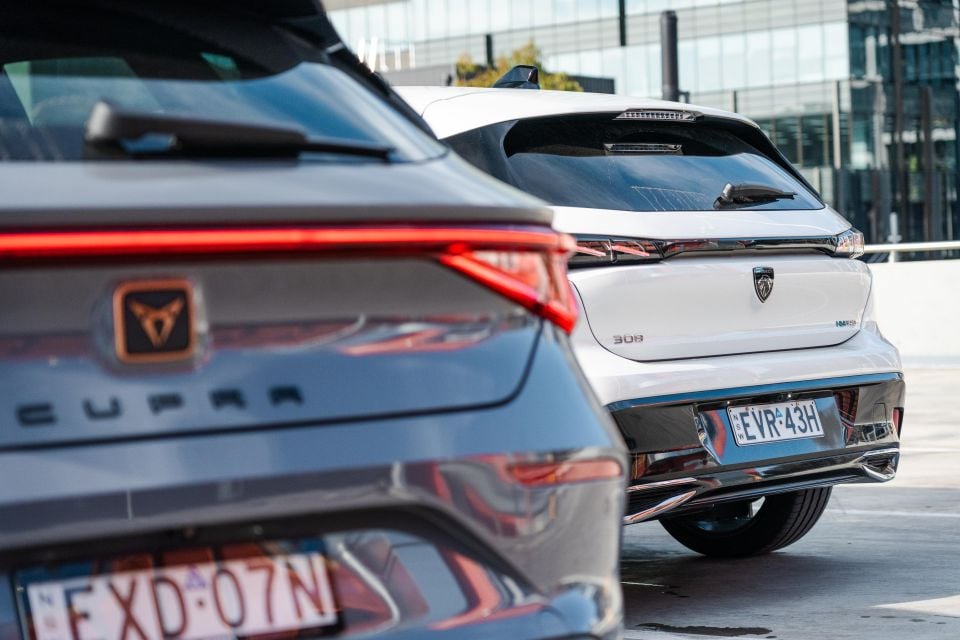
Click the images for the full gallery
MORE: Everything Cupra Leon MORE: Everything Peugeot 308
Share your thoughts with us in the comments below!
James Wong is an automotive journalist and former PR consultant, recognised among Australia’s most prolific motoring writers.
Share your thoughts and write a review of a car you own and get featured on CarExpert.


Damion Smy
11 Hours Ago


Damion Smy
14 Hours Ago


Damion Smy
17 Hours Ago


Damion Smy
19 Hours Ago


Damion Smy
19 Hours Ago


Damion Smy
20 Hours Ago